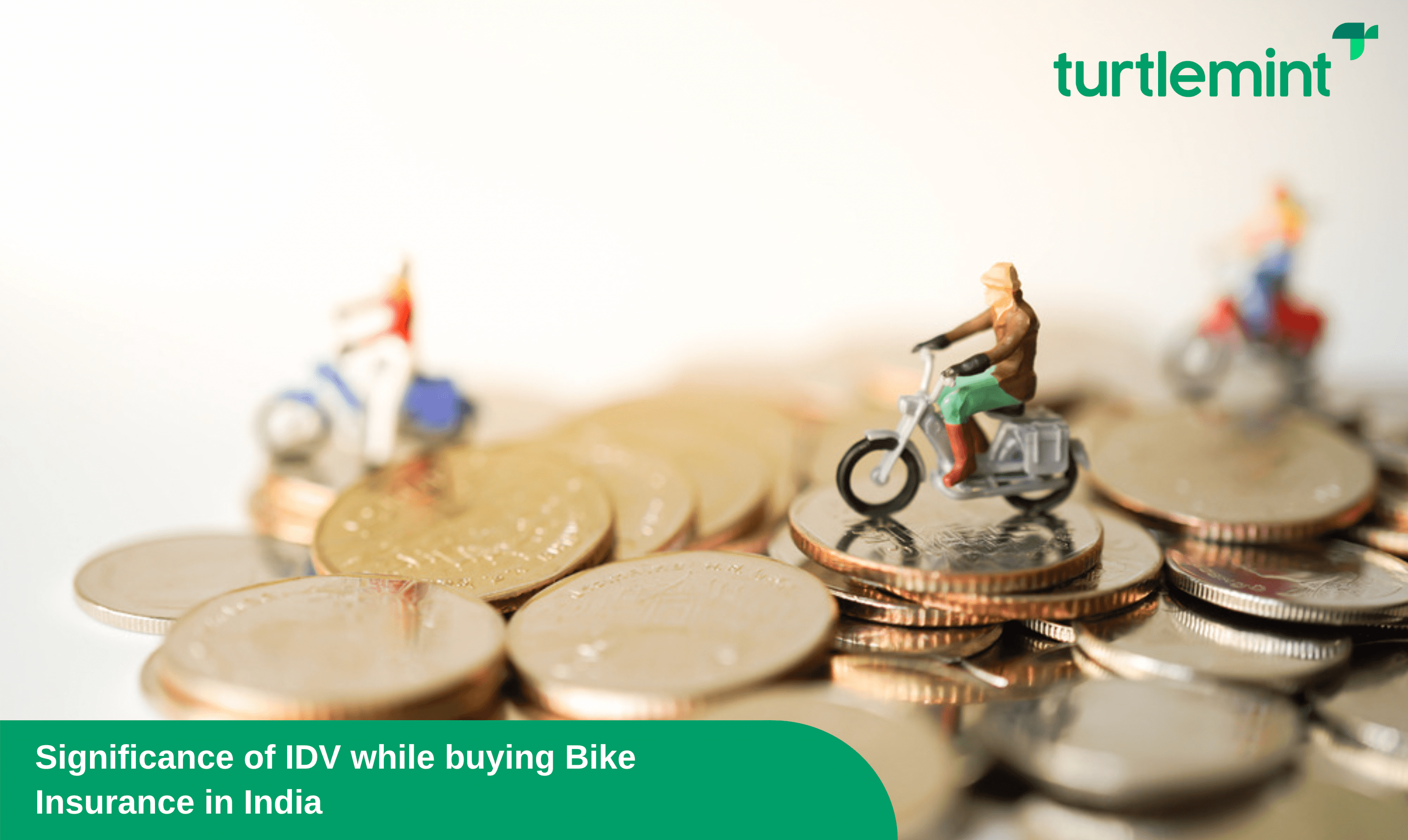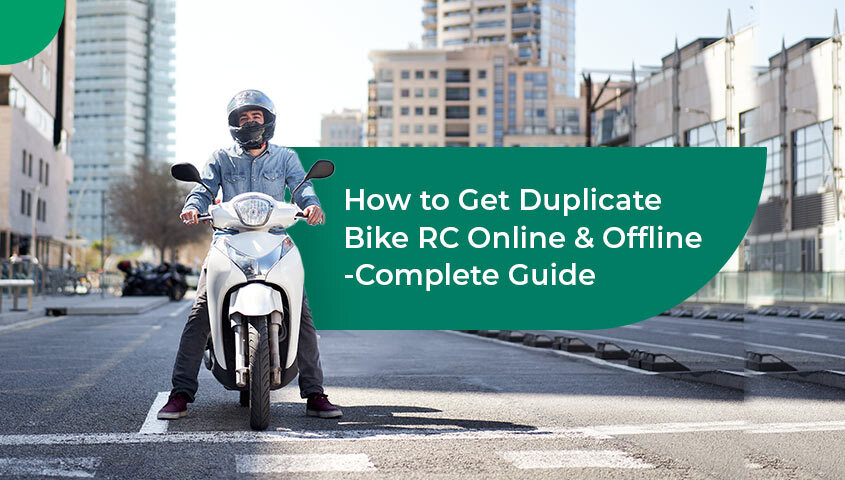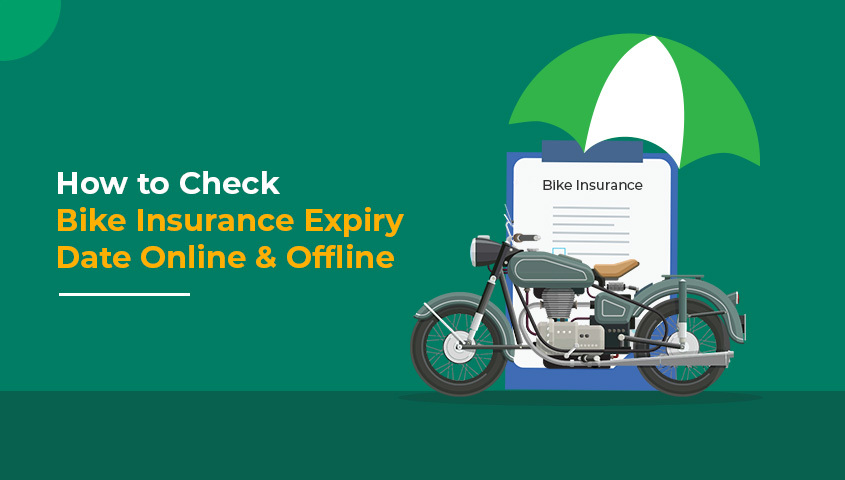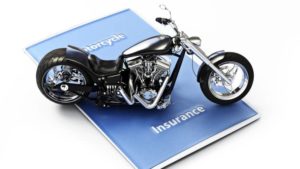
Are you intending to buy your dream bike? Awesome! However, there are certain aspects you need to know before you insure your bike. In this article, we shall be talking about one of the most important aspects called Insured Declared Value or IDV of your bike.
What is IDV?
IDV represents the ex-showroom value of the two-wheeler being assessed. It is fixed based on the manufacturer’s selling price, including invoice value and taxes (GST) as applicable. It, however, does not include the insurance and registration charges.
IDV is a function of the below-mentioned factors:
- Make and Model of the vehicle
- Sub-model and specifics of the bike under consideration
- Registration date
IDV is the proxy for arriving at the sum insured for the two-wheeler being assessed under the insurance policy. IDV is fixed at the beginning of each policy year for the vehicle being insured. If the two-wheeler is not brand new, then the IDV is based on the current selling price of the model as quoted by the manufacturer adjusted to the years of depreciation.
The importance of IDV while buying bike insurance in India
It is mandated under the Motor Vehicles Act, that two-wheelers hold at least a third-party insurance to cover liabilities/claims arising from the counterparty if engaged in an accident. However, there is a growing preference to buy comprehensive insurance considering that the cost of repairs and reimbursements has been rising. Further, many individuals invest in very expensive bikes that reflect their lifestyle. The spare parts and maintenance of such bikes are quite high, and comprehensive insurance comes in handy for the upkeep of such bikes and all bikes in case they are involved in accidents.
There are numerous technical terms that one has to decode whilst availing of a bike insurance policy, one such term is the insured declared value or IDV. IDV is one of the many aspects that influence the premiums of your bike insurance plan in India. Let’s dive deep to understand the nuances.
Depreciation rates applicable
The IDV is subject to depreciation based on the age of the vehicle, the rate at which depreciation is applied is as mentioned below:
|
Timeline |
Rate of depreciation |
|
<= 6 months |
5% |
|
6 months – 1 year |
5% |
|
1 – 2 years |
15% |
|
2 – 3 years |
20% |
|
3 – 4 years |
40% |
|
4 – 5 years |
50% |
If the vehicle is older than 5 years, then the vehicle is physically examined and an appropriate IDV is arrived at by the insurer. Upon agreement between the insured and insurer, a contract for bike insurance is drawn.
What is the impact of IDV on your bike insurance?
The value of your IDV has a direct and proportional impact on the bike insurance premiums. If you have a higher IDV, it essentially translates to a higher sum insured, this means that the premiums would be on the higher side.
On the other hand, if your bike is old and has had reasonable wear and tear, the higher depreciation rate would bring down the value of your bike considerably, which would in turn mean that your bike will now be insured for a smaller sum insured. This would in turn translate to a lower premium.
How does IDV matter?
As indicated earlier, IDV is the sum insured for the bike you intend to insure. If your bike were to be stolen in the first 6 months of its purchase, then based on the above table, you would be eligible for 95% of the IDV value as settlement. This means that you could potentially claim back 95% of the ex-showroom price of the bike. This could be a headstart for you if you intend to purchase another bike to continue with your activities without any untoward disruptions.
You must pay close attention to the IDV and ensure that it matches the market value of the vehicle net of depreciation. This will ensure that you are in a position to at least have a headstart in replacing your vehicle in the event it is either stolen or irrevocably damaged during an accident.
Why should you look for a higher IDV?
Although a high IDV would translate to higher premiums, you should always try to negotiate for a higher IDV for your bike to ensure that you would be appropriately compensated. The whole premise of insurance is to pay a certain premium to hedge your risk against an unpleasant event. Although you may feel that the premium hurts you on an intermediate basis, the compensation you will receive during the occurrence of the unfortunate event will make up for every penny spent on your bike insurance.
Hope this brief note on IDV helps you avail yourself of bike insurance that is competent and provides you optimal coverage against any mishap or theft about your two-wheeler.
If you need help in choosing the right policy, contact Turtlemint’s advisor for your bike insurance.
DISCLAIMER
This article is issued in the general public interest and is for educational purposes only. The blogs should not be used as a substitute for competent expert advice from a licensed professional to best suit your needs.





















